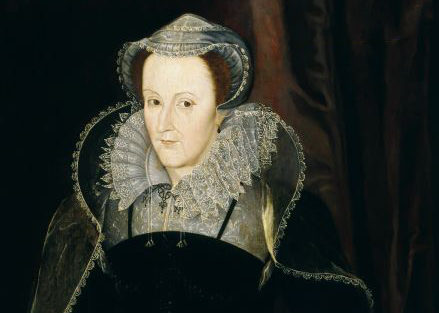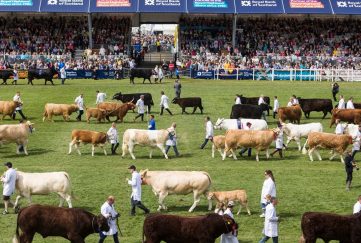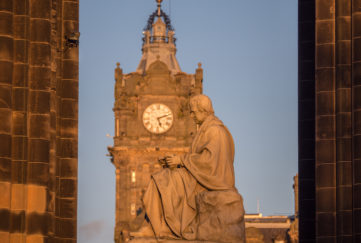Scottish History In Minutes – The Story of Mary, Queen of Scots

Murder, intrigue and ambition overshadowed the rule of this romanticised royal. Discover the true story of Mary, Queen of Scots…
The life of Mary Stuart – better know as Mary, Queen of Scots – is possibly one of the most dramatic and tumultuous in history.
Mary was born at Linlithgow Palace, Scotland, became queen aged one week, departed for France as a child, and married the French dauphin in 1558 when she was still a teenager. Her husband, who became king of France as Francis II, died in 1561 and Mary returned to Scotland to rule that same year. All that before she was 20 years of age.
Her return was fairly harmonious, but this peaceful beginning was not to last. A few suspicious murders later – and after nearly 18 years’ imprisonment by her cousin Elizabeth I – Mary would find her head on the executioners block.
The catalyst can be pinpointed to July 29, 1565, when Mary took her half-cousin – and Elizabeth I’s cousin for that matter – for her second husband.
Many foreign suitors had been proposed, as the Scots looked to an overseas alliance, so it came as a shock when Mary announced her intention to marry an Englishman, Lord Darnley.
There were advantages though!
Mary’s new beau had quite an ancestry. He was a son of the Earl of Lennox and grandson of Margaret, daughter of Henry VII of England – the grandfather of the English queen, Elizabeth I.
Darnley was therefore among the nearest heirs to England’s throne, making Mary and her consort, a formidable combination. Mary was tall, but Darnley was taller – and handsome, too. Rather like Oscar Wilde’s Dorian Grey, Darnley was almost too perfect, but he possessed courtly grace and swept the widowed queen off her feet. A child and heir would surely follow.
Elizabeth I was none too pleased with her cousin’s choice of husband. The union made Mary stronger and Catholic pretensions to replace Elizabeth with Mary were only too clear.
A papal dispensation for the marriage of cousins – even half cousins – had not been obtained, yet the marriage still took place – in the early hours of the morning, suggesting certain and indecent haste.
Four days of balls and banquets followed, but it was soon apparent that good looks and proximity to the English throne were all that recommended Darnley. He was weak, insolent, arrogant and vicious.
The marriage was the signal for an attempted insurrection by Mary’s chief minister, Moray. This caused the first rift between Darnley and the man believed responsible for his eventual murder, James Hepburn, Earl of Bothwell. Mary needed a leader for her army and Bothwell was the obvious choice. She could not say no to Darnley, however, who insisted the appointment be chosen by his father. It was a slight Bothwell would not forget.
Moray’s attempted insurrection was dealt with, but the writing was on the wall, as once-loyal subjects rose against Mary. Her honeymoon was over, too, and Mary started to see the light, rejecting Darnley’s demands that the Scots crown pass to his heirs should she die without issue.
A failed rebellion…
This also brought a new chief adviser for Mary, Italian, David Rizzio, who first entered service as a musician. Darnley suspected he was the chief obstacle to his designs on the crown. Rizzio, close to the queen and acting as an informer, fostered a dangerous unpopularity, not least because he was foreign.
An Italian chief advisor on top of an English king consort had put the Scottish nobles’ noses right out of joint.
It was here that Darnley showed his ruthless streak. In cahoots with Protestant chiefs, he marched into Mary’s cabinet, physically restraining her – even though she was queen and heavily pregnant at the time – while accomplices stabbed Rizzio more than 50 times.
Despite her grief, Mary played a canny game. She concealed her indignation from Darnley, while separating him from his allies and plotting revenge. Although they became estranged, Mary worked Darnley well, suggesting his co-conspirators couldn’t be trusted and that his life, as well as hers, was in danger.
Meanwhile, Bothwell moved centre stage. The queen and Bothwell were both married, yet the earl had his sights set on queen. This meant setting aside his wife and getting rid of Darnley.
The birth of James VI of Scotland!
Before this, Mary gave birth to a son, the future James VI of Scotland and I of England, but this did little to mend the rift between the new parents.
Darnley spoke of leaving Scotland, but soon fell ill with smallpox and was brought to Edinburgh to recover.
While the queen danced the night away at Holyrood, Darnley’s safe haven was gun-powdered. In what remains a mystery to this day, the house was blown to smithereens yet Darnley’s body was found in the garden without a scratch on him. It’s believed he escaped the explosion, only to be strangled or smothered.
The finger of suspicion pointed at Bothwell and rumours grew that the queen knew more than she confided. Bothwell was quickly tried, just as quickly acquitted, and within three months of Darnley’s murder, he and Mary married.
The Scots nobility decided they’d had enough and took matters into their own hands. They took up arms against their queen, whose loyal band melted without a blow struck. Left with no alternative, Mary surrendered to her own people.
Abdication followed, then escape and one final defeat, leading to her throwing herself on the mercy of Elizabeth I.
The rest is pitiable. Bothwell was exiled to Denmark, where he was chained up in a dark, dank dungeon and died
more than a decade later in 1578.
Elizabeth I didn’t seem to know what to do with her forceful cousin queen…
Mary suffered 19 years of house-arrests – albeit in remarkably better conditions than her husband. Elizabeth I didn’t seem to know what to do with her forceful cousin queen. Execution would be convenient, but to do so without due cause would set a precedent that might endanger Elizabeth’s own crown – and head.
The Babington Plot sealed the deal, and Mary’s fate. Letters, sanctioning the assassination of Elizabeth and said to be in Mary’s own hand, were intercepted, and Mary was put on trial for treason.
Mary spent her final days at Fortheringhay Castle, in the north of England, and was beheaded in the great hall there in 1587.
No key player in Mary’s rule of Scotland prospered – save one. Mary’s son James inherited the Scottish throne from his mother and then the English throne after Elizabeth’s death, becoming James VI of Scotland and I of England, uniting the two kingdoms in peace – for a short time at least.
Discover 9 Fascinating Facts About Mary, Queen of Scots >>
Purchase a copy of Scottish Heroes and discover more about Mary, Queen of Scots plus more (CLICK HERE)





